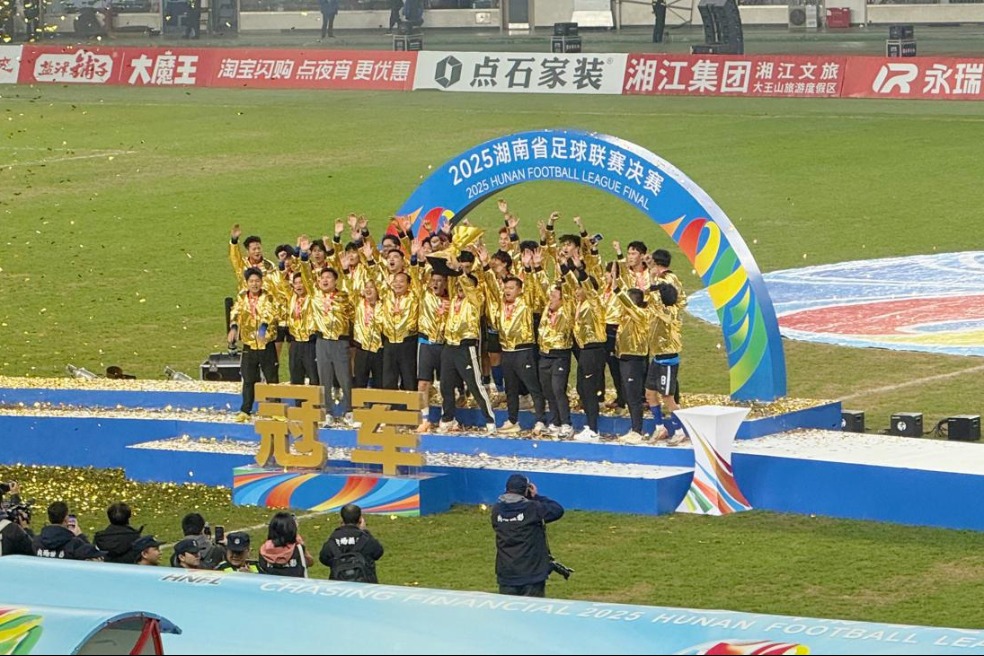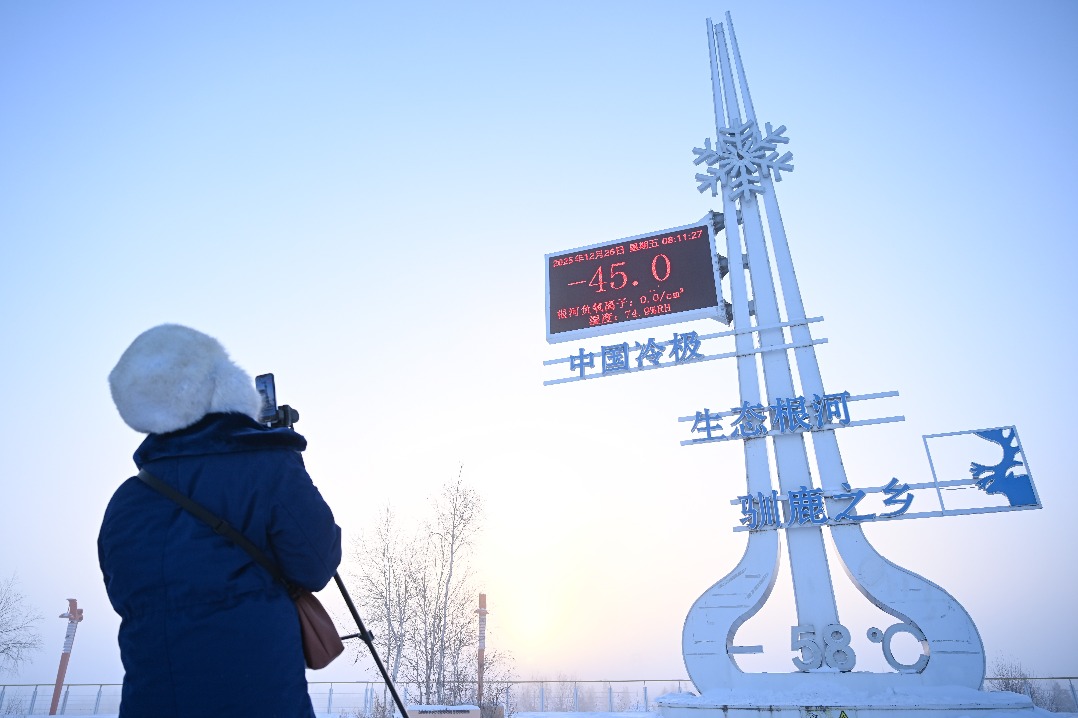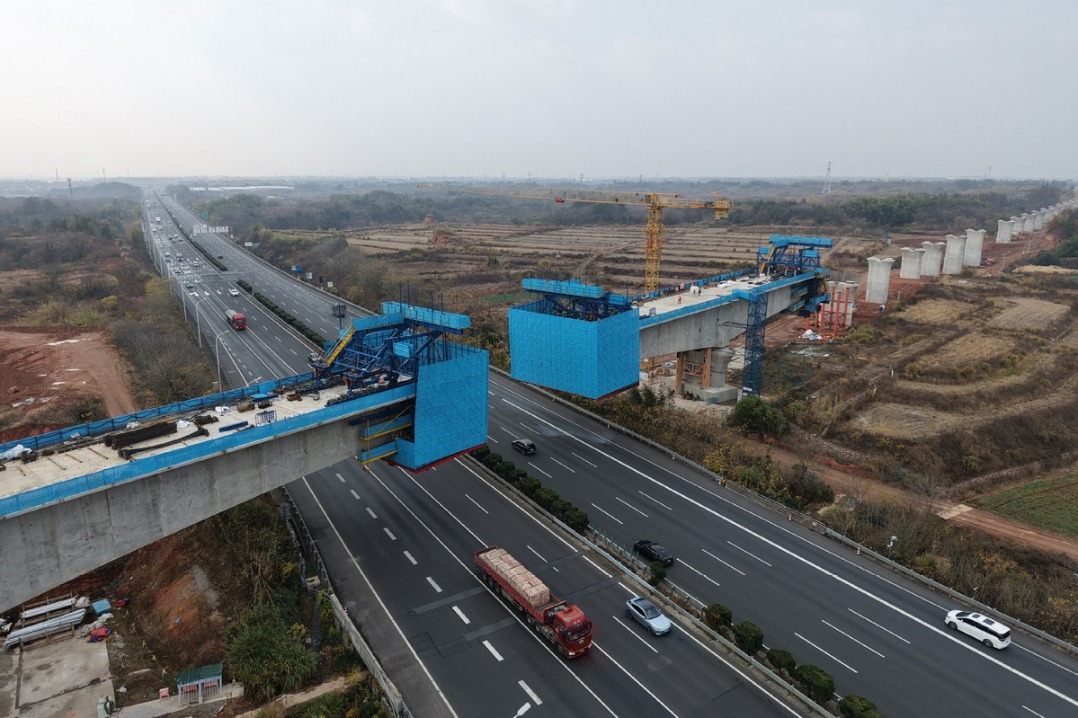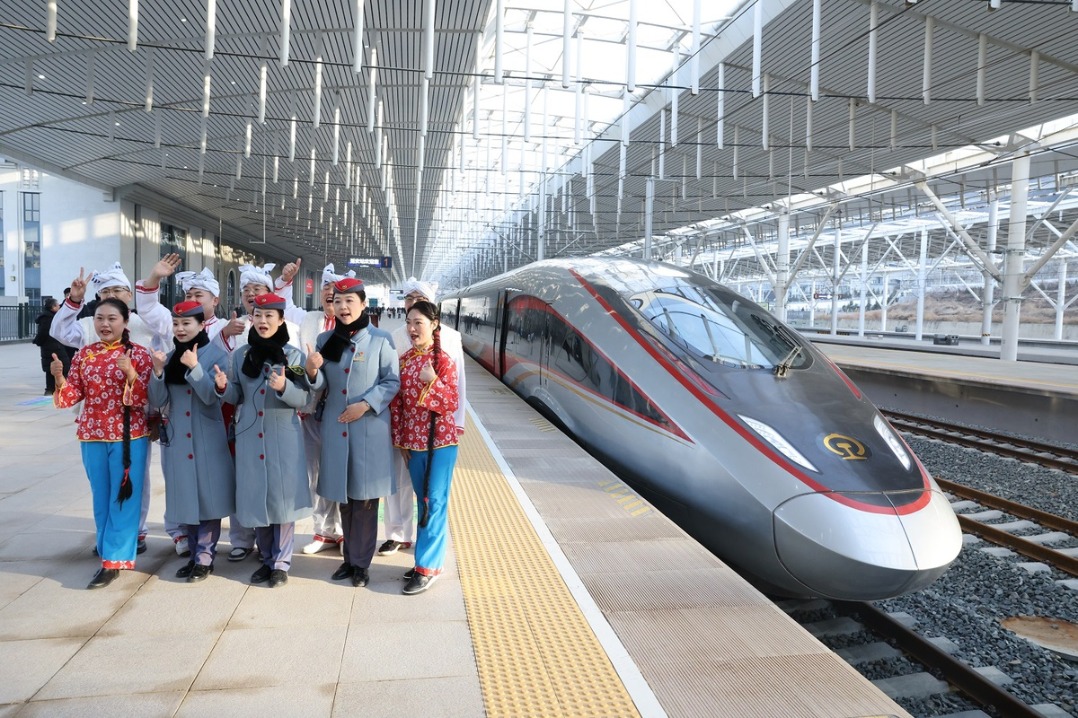Soft power set for center stage
Hong Kong is going all-out to get in line with the nation's development blueprint,which aims to make the city a world hub for arts and culture in the coming years. Zhou Mo reports from Shenzhen and Ao Yulu from Hong Kong.


For years, Hong Kong's glory has largely been in finance, transportation and trade, with arts and culture overshadowed. As the national development blueprint sets a new objective for Hong Kong, the special administrative region is expected to embrace a major lift in soft power in the coming years, further enhancing its status on the international stage.
The country's 14th Five-Year Plan (2021-25) has pledged to help the SAR transform into a hub for arts and cultural exchanges between China and the world.
Officials and industry players said the city's historical foundation, geographic location, developed professional services and sound legal system provide nearly all the elements for it to emerge as the world's arts and cultural hub. Cooperation with other cities in the Guangdong-Hong Kong-Macao Greater Bay Area, which have massive market and are strong in technological innovation, will give the SAR a further shot in the arm. This will help the city give better play to its strengths and unleash its full potential in the field, they said.
Hong Kong's cultural industry has seen tremendous growth since the 1970s, thanks to the socioeconomic transformation and changes in the media landscape at the time, with local films, TV dramas and music gaining high popularity and making a big impact across the region. It has now become one of the most dynamic sectors of the city.
According to the Census and Statistics Department, the value-added of Hong Kong's cultural and creative industries amounted to about HK$116.2 billion ($15 billion) last year, accounting for 4.5 percent of its gross domestic product. More than 228,000 people worked in the industries last year, contributing to 6.2 percent of the city's total employment.
The SAR has also been a trading center for artworks. Its global art market share grew from 17.5 percent in 2019 to 23.2 percent in 2020, overtaking London for the first time, statistics from art market research firm ArtTactic showed. The total import-and-export value of art, collections and antiques in Hong Kong amounted to HK$33.6 billion last year, almost double that of 2017.
Hong Kong has unique strengths to develop arts and culture, Chief Executive Carrie Lam Cheng Yuet-ngor said. A city that features East-meets-West culture and strong international linkage, Hong Kong is able to gather both domestic and overseas professionals and become a platform for increasing international influence of Chinese culture, she told an arts-and-culture-themed high-level summit in Hong Kong in July.
Moreover, Hong Kong's rich cultural resources can help enhance its status as a global metropolis and a livable city, while more high-quality jobs for the younger generation can be created with the development of the industry, she added.
In her latest Policy Address, Lam said the Hong Kong government will strive to realize the city's new positioning from several aspects, including improving its cultural infrastructure, fostering collaboration with mainland and overseas art institutions, leveraging technology, and nurturing professionals.
Helen So Hiu-ming, who leads a research team of arts and culture at local think tank Our Hong Kong Foundation, believes that Hong Kong's "new role" doesn't mean the city has to start from scratch in the area, but it needs to fine-tune its policies to be in line with the national 14th Five-Year Plan.
Hong Kong has a strong historical foundation in developing into an East-meets-West Centre of International Cultural Exchange with various art fairs and performances involving Western and Eastern artists being held, such as Art Basel and the Hong Kong Arts Festival. But the SAR and the Chinese mainland have adopted different policies.
"Digitalization and industrialization are the keywords, or directions, of mainland policies for arts and culture, but they are not the direction Hong Kong has prioritized during the past 25 years," So said.
She said the development directions of Hong Kong's arts and cultural industry have been scattered and not that industrialization-centered. The city's cultural affairs have been undertaken by different policy bureaus, with piecemeal grants given to different bureaus or groups.
Such a decentralized mode of development means that the strengths of government departments and industry players were not consolidated to create a maximum result, she said.
Earlier, in September, Lam mentioned the possibility of a government restructuring, which included a move to establish a dedicated Culture Bureau. So sees it as a "good chance" to achieve resource integration "at a good time".
"What is needed is a demonstration of commitment at the leadership level on how to consolidate all these cultural assets and creative power. This means integrating the public, private and industry circles to engender a strategy for Hong Kong that recognizes what its strengths are across the board," So said. She also emphasized the need for future leaders of the to-be-confirmed bureau to clarify which direction the whole industry should go.
"The leadership needs to devise a vision so that all the budding small and medium-sized enterprises at the ground level can contribute, without compromising their respective unique edge and potential, all the while showcasing Hong Kong flair and characteristics," the researcher said.
More alternative modes
Hong Kong's arts and cultural sector has been battered by the COVID-19 pandemic in the past two years, with museums closed, art fairs canceled, and international visitors kept at bay. The silver lining is that this has accelerated the industry's pace of digitalization and integration with innovative technologies.
According to a Hong Kong Arts Development Council report, more alternative modes of arts participation have become available since the pandemic broke out early last year, such as live streaming of theatrical performances, arts seminars via video conferencing apps, or virtual exhibitions of gallery collections.
The report, which based its results on a survey of 1,500 Hong Kong residents in January, found the percentage of arts participants who had engaged in alternative modes during the pandemic had increased to 92 percent - up from 70 percent before the outbreak.
The Leisure and Cultural Services Department, which is under the Home Affairs Bureau, said integration of arts and innovative technologies has become a dominant trend in Hong Kong's arts development.
An interdepartmental task force on art tech, which is chaired by the secretary for home affairs, has been set up to formulate corresponding strategies and measures. A total of HK$100 million has also been set aside under funding programs to support initiatives related to arts tech, the Home Affairs Bureau told China Daily.
The East Kowloon Cultural Center, which is currently under construction and due to open in phases in 2023, is expected to serve as a demonstration venue of arts technology. The LCSD plans to adopt advanced innovative technologies and set up the center as an incubator for the development of arts and technology to identify new emerging trends in the arts, and seize the opportunities that come with innovation and technology.
In addition to those of Hong Kong, arts and cultural institutions as well as enterprises in the mainland cities of the Greater Bay Area have dedicated themselves to deepening the combination of technology and arts.
Guangdong Museum, for example, has introduced a mini-app on WeChat, in which a three-dimensional virtual museum is displayed. Visitors can be located to certain cultural relics, receive customer services, and purchase cultural products in a more-convenient way with the help of online guidelines on the app.
It also built a virtual platform at an exhibition on European paintings last year. Visitors could produce their virtual self-image through augmented-reality technology, which could then be translated into one in a painting style. After that, the virtual painting-style image could be made into physical Lego-like blocks in a short time and handed over to visitors on site for assembling.
Chen Shaofeng, deputy director of the museum, said it's vital for cultural institutions to jump on the digital bandwagon to cater to the needs of a younger generation that is becoming more and more tech-savvy and has large exposure to the internet.
"Museums should make good use of digital technologies to hold exhibitions or provide cultural and creative services to seek better development. This is an inevitable course," he said.
Artron Art Group, a cultural company which has bases in Beijing, Shanghai and Shenzhen, has also launched a mobile application for users to visit museums online at any time.
The digital platform provides virtual galleries and displays with 3D technology on a huge arts database, where visitors can swiftly reach out to the interactive creation chronology of artists and get related information about the artworks.
"Digitalization demonstrates a deepened integration of culture and technology, which would stimulate the vitality of the traditional cultural industry and promote its future development," said Lan Lan, senior manager of Artron's art data department. "It will be the trend for museums and the entire cultural industry in future."
According to So, there is plenty of room for cooperation between Hong Kong and other cities in the Greater Bay Area by leveraging their complementary strengths.
Those cities have abundant technology companies, a large pool of technology professionals and a massive market, while Hong Kong is well-equipped with both local and overseas arts talents who are good at storytelling, she said.
"We can partner with those institutions (in those cities) to create innovative and expressive arts projects to promote cultural exchanges."
Fang Yiling, director of OCAT Shenzhen and OCT Art & Design Gallery, stressed the importance of international exchanges in driving the industry's growth in the Greater Bay Area.
The two Shenzhen-based art institutions where Fang works, along with six others from Shenzhen and Guangzhou, in 2017 initiated an art trip in the Greater Bay Area that was part of the art week activities of Art Basel Hong Kong, Fang said.
"We hope more and more art practitioners and lovers, both domestically and internationally, could visit the Greater Bay Area, get a better understanding of the ecosystem and landscape of its art and cultural industry, and exchange views and experiences, thereby promoting the industry's development," she said.
- China reports achievement in forestry, grassland germplasm resources conservation
- PLA conducts live-fire training in areas north, southwest of Taiwan Island
- PLA conducts training of assault on maritime targets to east of Taiwan Island
- Fujian Coast Guard conducts comprehensive law enforcement patrols in the waters surrounding the vicinity of Taiwan Island
- Theme poster on military drills 'Arrow of Justice, Control and Denial'
- Theme poster on military drills 'Shield of Justice, Smashing Illusion'





































